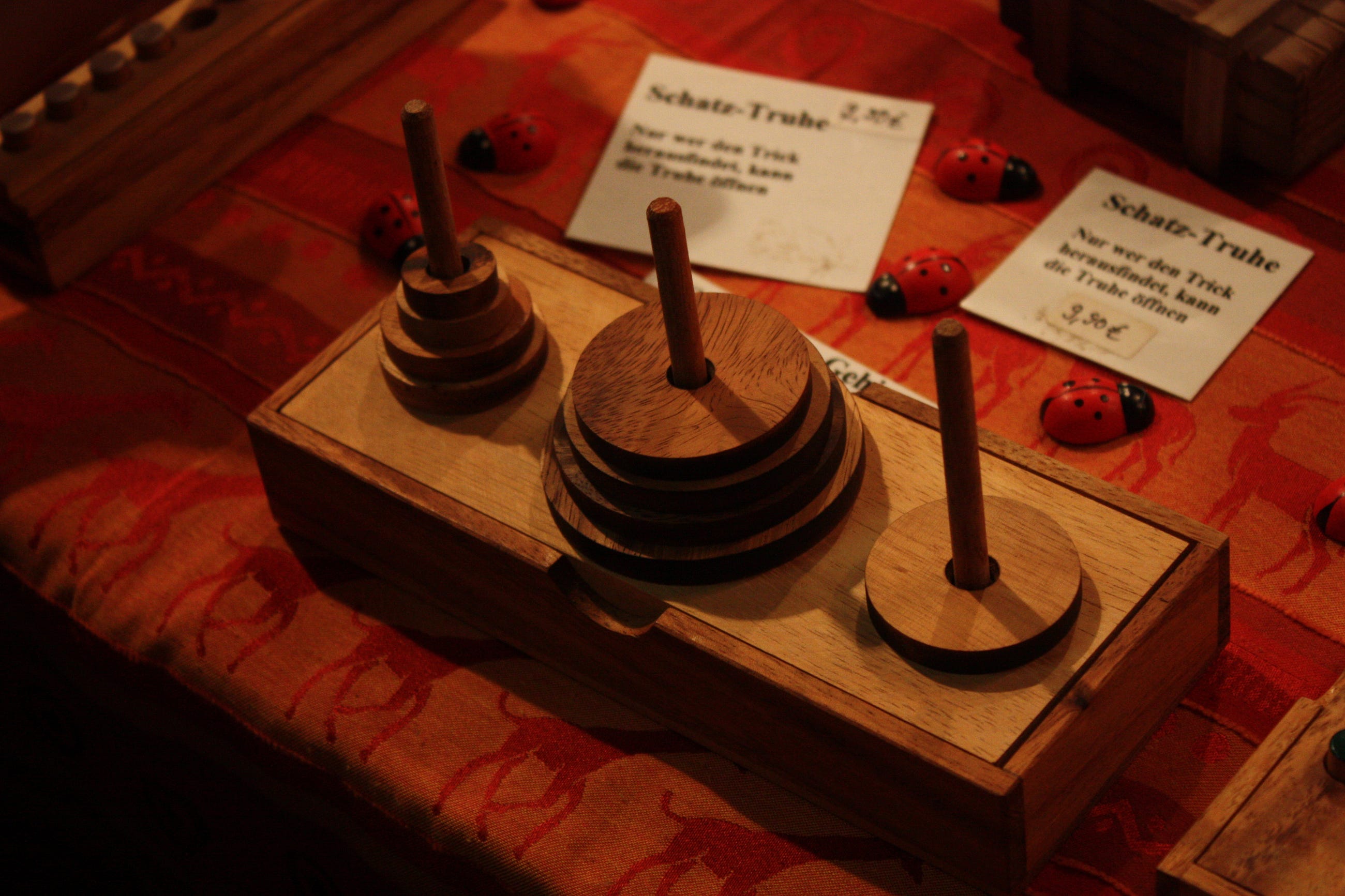

When the priests finally succeed in transferring all of the disks, the world will end. If the original “needle” (peg) was a tower with 64 disks, the number of transfers would be 2 64 − 1, or 18,446,744,073,709,551,615 this is exactly the same number required to fill an 8 × 8 checkerboard with grains of wheat, 1 on the first square, 2 on the second, 4 on the next, then 8, 16, 32, and so forth.Īccording to a legend of obscure origin, there exists a Vietnamese (or, sometimes, Indian) temple or monastery where priests have been shuffling golden disks between three pegs for many centuries. Thus for 8 disks, the puzzle requires 2 8 − 1, or 255 transfers. It can be shown that for a tower of n disks, there will be required 2 n − 1 transfers of individual disks to shift the tower completely to another peg. The puzzle of the Tower of Hanoi is widely believed to have been invented in 1883 by the French mathematician Édouard Lucas. SpaceNext50 Britannica presents SpaceNext50, From the race to the Moon to space stewardship, we explore a wide range of subjects that feed our curiosity about space!.Learn about the major environmental problems facing our planet and what can be done about them!

#Hanoi towers problem how to#
COVID-19 Portal While this global health crisis continues to evolve, it can be useful to look to past pandemics to better understand how to respond today.Student Portal Britannica is the ultimate student resource for key school subjects like history, government, literature, and more.From tech to household and wellness products.

Britannica Explains In these videos, Britannica explains a variety of topics and answers frequently asked questions.This Time in History In these videos, find out what happened this month (or any month!) in history.#WTFact Videos In #WTFact Britannica shares some of the most bizarre facts we can find.Demystified Videos In Demystified, Britannica has all the answers to your burning questions.Britannica Classics Check out these retro videos from Encyclopedia Britannica’s archives.For example, if $S=4$ and $p=3$, we can move the smallest two disks to the second and third pegs, then stack them to make room for the third disk, which after moving would reveal the largest disk and solve our problem. One last piece of information that might be useful when trying to fully optimize this problem is the following: We can make many smaller towers of Hanoi to save on the pegs we use. (As the question states that the largest disk is unique, we can remove that possibility) Using this, we can refine our earlier statement to say that if the number of disk sizes is $S$, then if $p\geq S$ we can solve in $d-1$ moves. So treating any disks of the same size as one is the best option. This is most definitely sub-optimal, as any disk where $D\le x\le D_1$ is unable to be placed due to our bad movements. They would either be on the bottom of the stack or above another dikc of a larger size, $D_1$. To prove this, imagine two identical disks $D$ are on two separate pegs. Concerning the disks of the same size, it is optimal to treat them as if they were a single disk. Now some slightly more complicated things. Also, is $p\geq d$, then the problem is easily solved by placing one disk on each peg, allowing for a solve using $d-1$ moves. We know that $h\geq d$, as otherwise the starting orientation could not be set up. If you have $d$ disks, $p$ pegs, and a maximum height of $h$. (this is not a complete solution, but rather merely some interesting facts)įirst of all, let's get some obvious information out of the way.


 0 kommentar(er)
0 kommentar(er)
